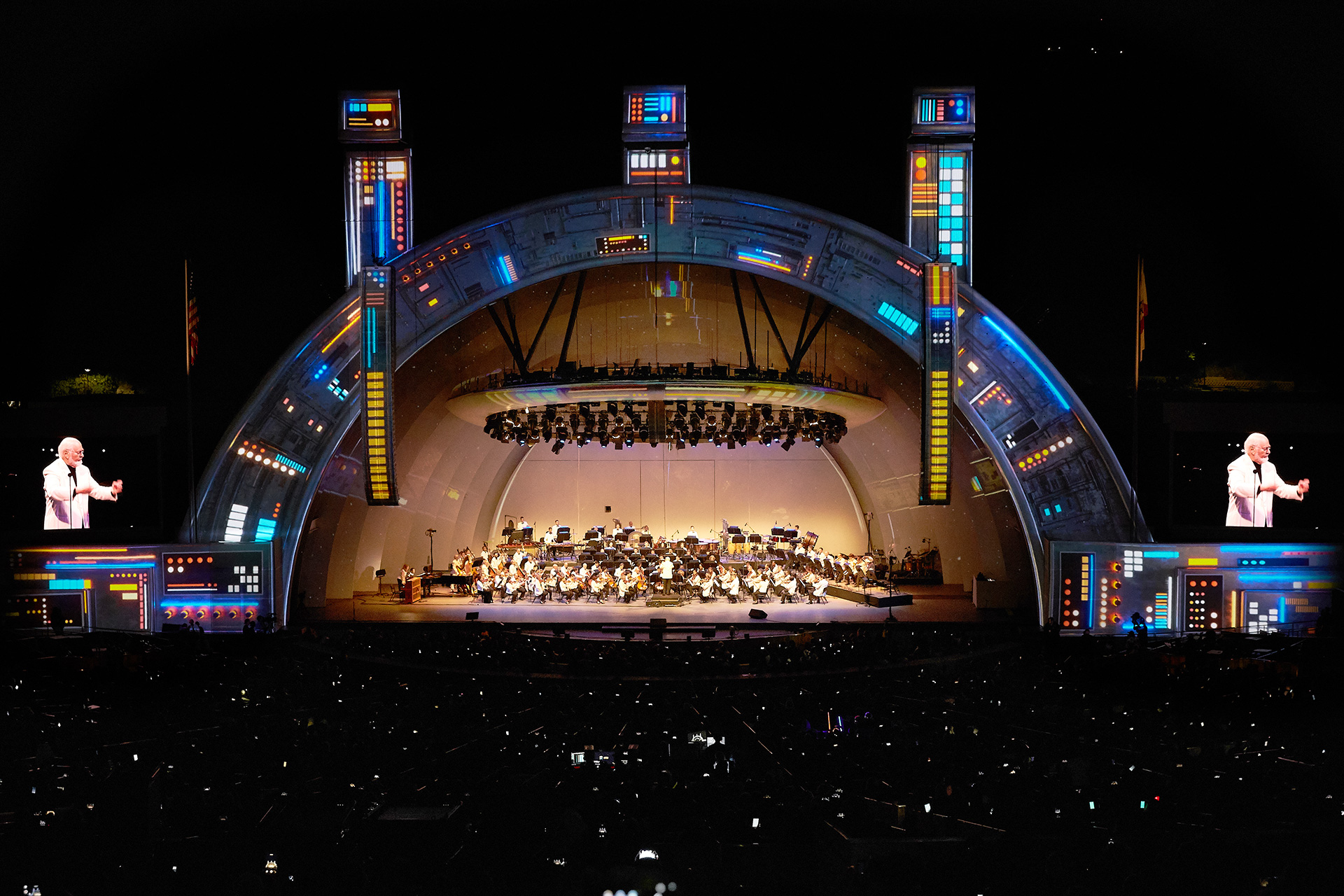As part of our discovery process, the XiteLabs team explored the relationship between color and sound. It drew on previous studies conducted around synesthesia, “the production of a sense impression relating to one sense or part of the body by stimulation of another sense or part of the body.”
Using the scheduled music programming as a base, the XiteLabs team began assigning color palettes and visual storytelling that would perfectly match the orchestra’s musical selections for that evening. The planned music selections ranged from popular, well-known pieces such as Stravinsky’s ‘Firebird Suite’ to the debut performance of a 12-minute atonal modern work ‘Guasamacabra’ by Venezuelan composer Paul Desenne under the direction of the LA Philharmonic’s famed conductor and music director Gustavo Dudamel. The Youth Orchestra of Los Angeles (YOLA) also made an appearance on Arturo Marquez’s modern classic “Conga Del Fuego Nuevo.”
To encourage attendance from a wider demographic, the LA Phil invited guest pop star Katy Perry, Herbie Hancock (the LA Phil Creative Chair for Jazz), and Kali Uchis to join in and perform some of their popular hits. These performances highlighted the magic of the LA Phil—and with wonderful orchestral arrangements by David Campbell (Joy, Brokeback Mountain, Spider Man, and Bob Dylan, The Rolling Stones, Paul McCartney) brought well known pieces such as Katy Perry’s ‘Firework’ to new life in front of the full-capacity audience of 17,500 in attendance. The encore and finale to the evening was the emotional and iconic Main Theme from ‘Star Wars’, with guest conductor and original composer John Williams wielding his (light saber!) wand.
For the LAPhil 100th Anniversary Concert our production approach integrated real-time visuals, reactive to both audio and the conductor’s wand motions, pre-rendered CG material, and live performance controls via Midi/Osc, XiteLabs created the most robust real-time visual mapping show ever done at the Hollywood Bowl, re configurable to any venue or scale of show in the future. With the interactive tracking data of Gustavo Dudamel’s performance feeding into Touch Designer and passed to Notch via OSC, and 8 discrete channels of submixed audio from the orchestra driving our pre-programmed looks for pieces such as Star Wars, it was evident to attendees that this was no ordinary projection mapping show!
Our chief technical artist Matt Guertin designed our show system using the Luminosity framework created by Keith Lostracco in Touch Designer 099. Luminosity allowed us to save presets and cue the generative system in a very advanced fashion. We had a 3D 4k previz view of the stage and a complete UV mapping pipeline with real time tracing and chasing geometries.
For ‘Star Wars’ our programming in Notch accounted for any given section of the orchestra, e.g., ‘Hi Strings’ to illuminate and animate certain areas of the the arch or ‘proscenium’ of the Hollywood Bowl, which, for the John William’s masterpiece theme for ‘Star Wars’, was skinned to look very much like the interior of the iconic Millennium Falcon ship that Han Solo pilots in the Star Wars films. In this way, XiteLabs fostered a direct relationship between the musical performance and composition and the audience’s visual experience of the music, while incorporating themed elements that spoke to the originality and beauty of the original IP. We were in awe witnessing The Master John Williams conducting this timeless epic, as our visuals surrounded him and the LA Phil orchestra in fields of asteroids, and onward through a warp-speed tunnel that bridged the past and future!
